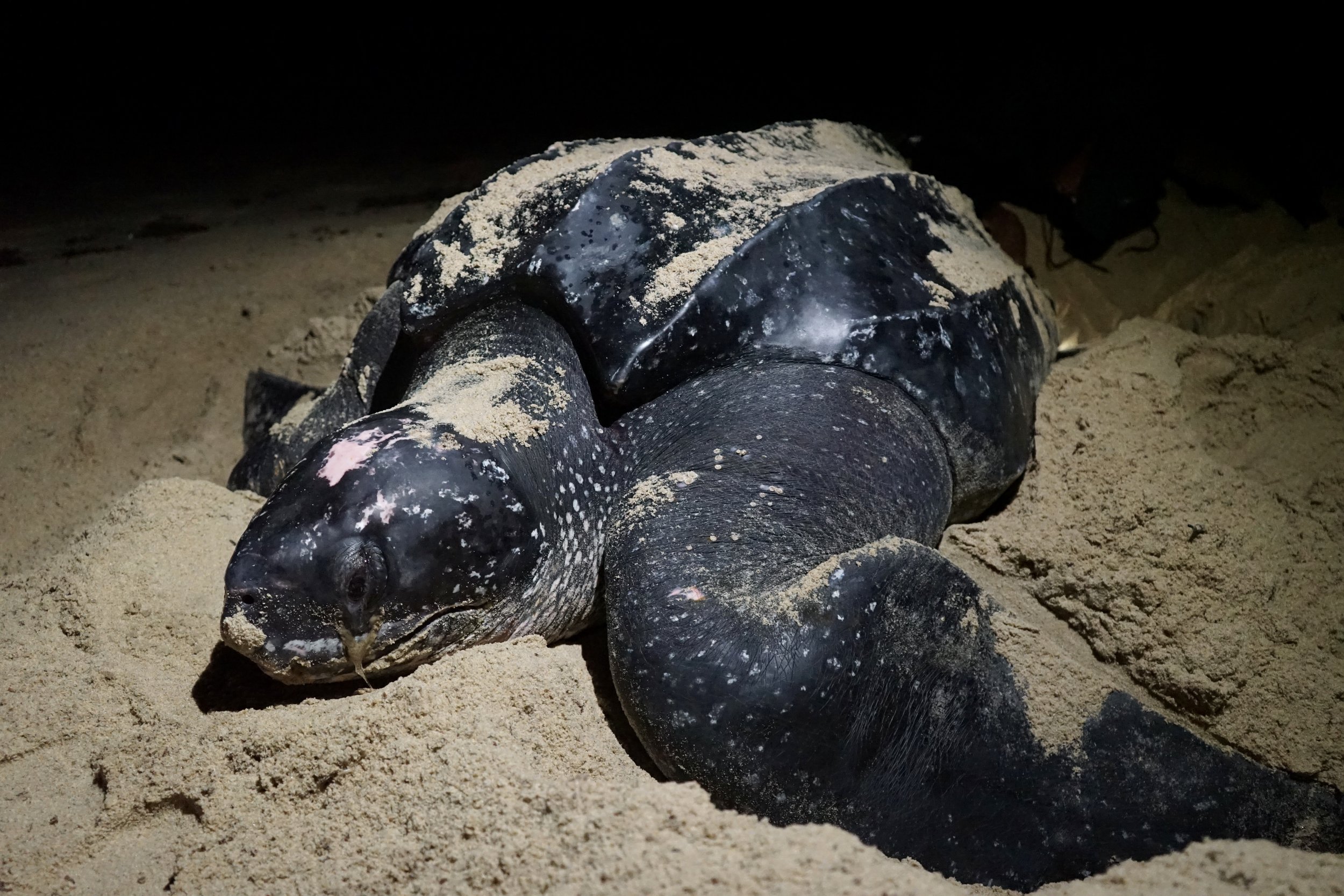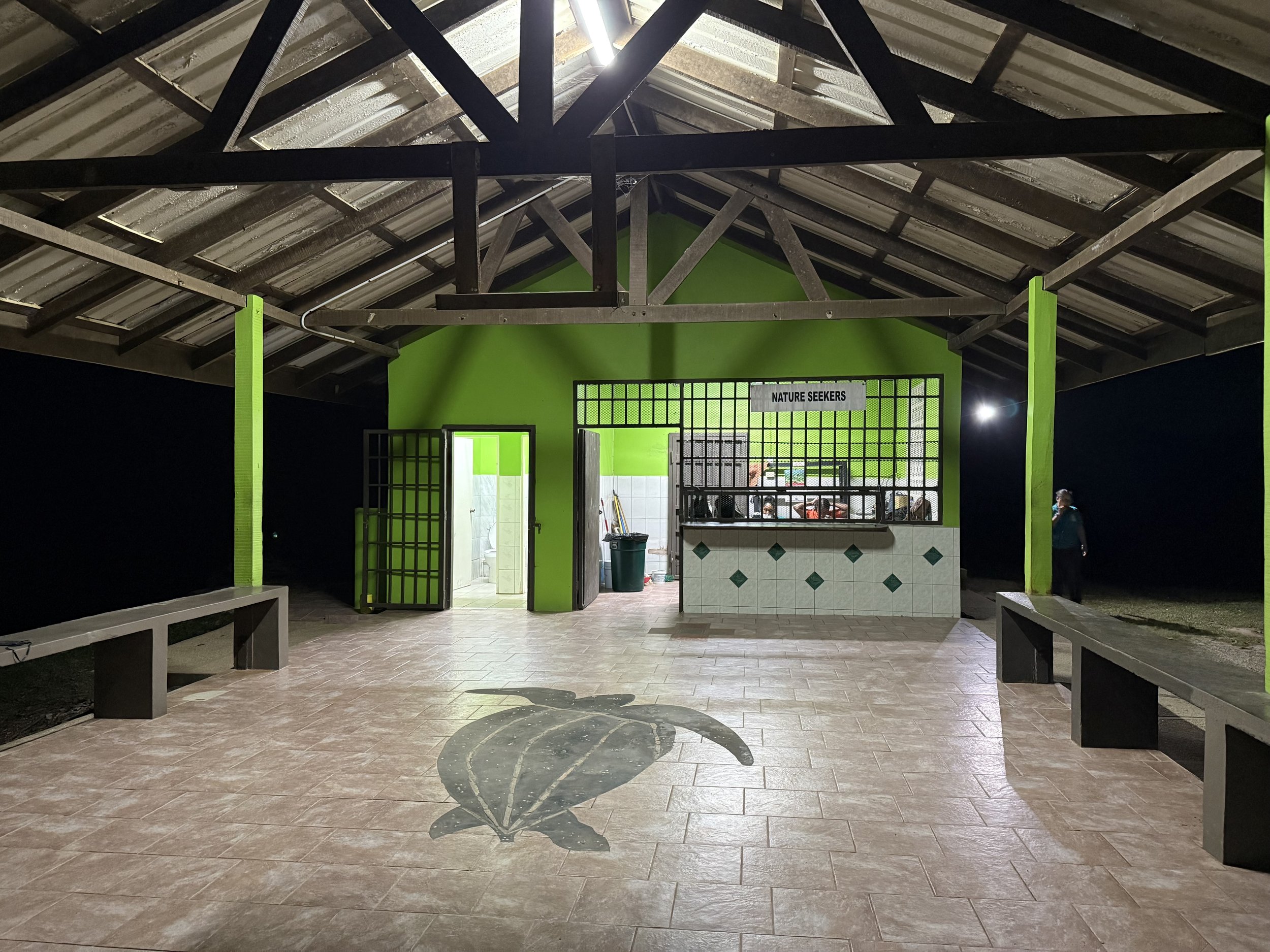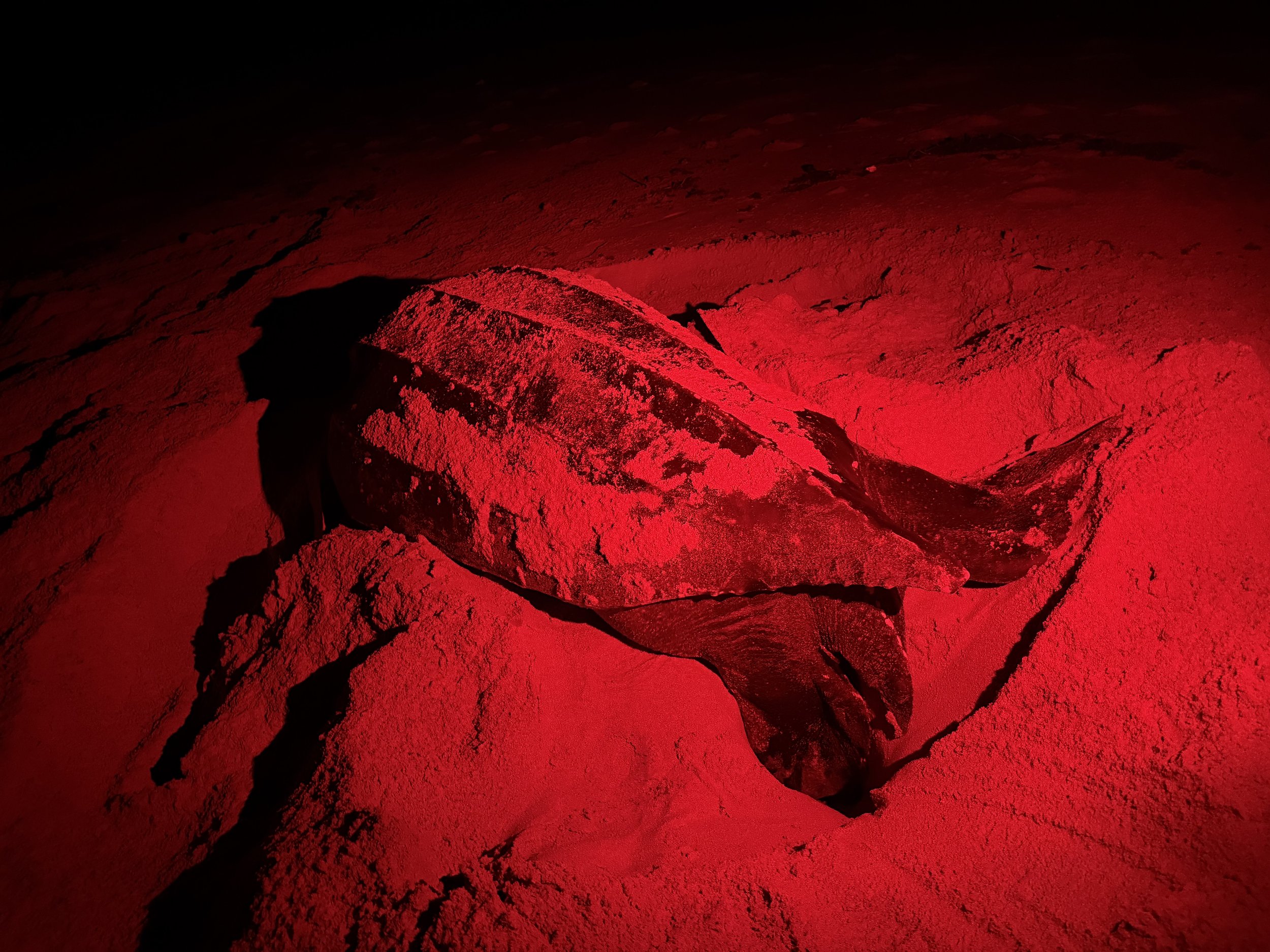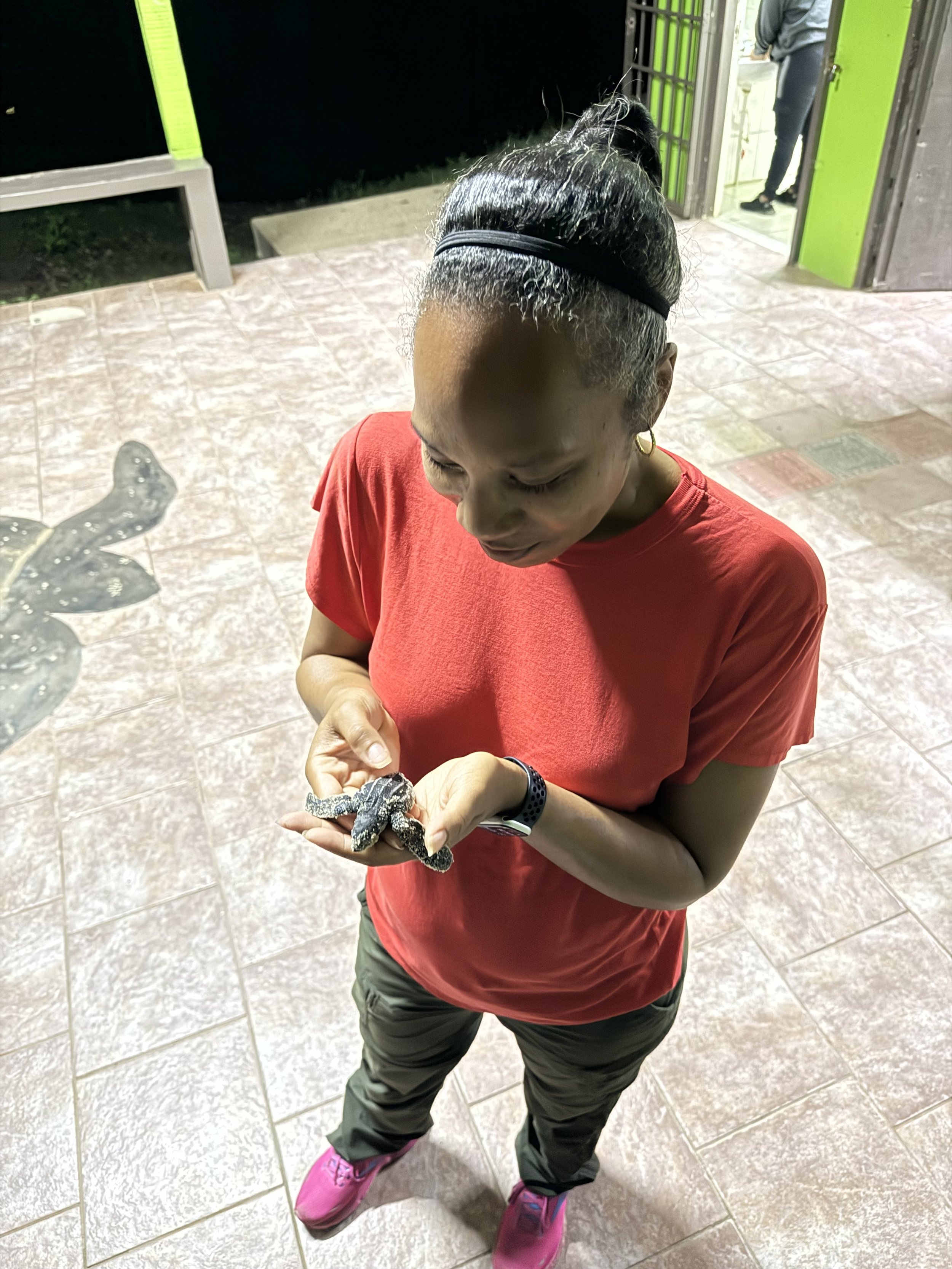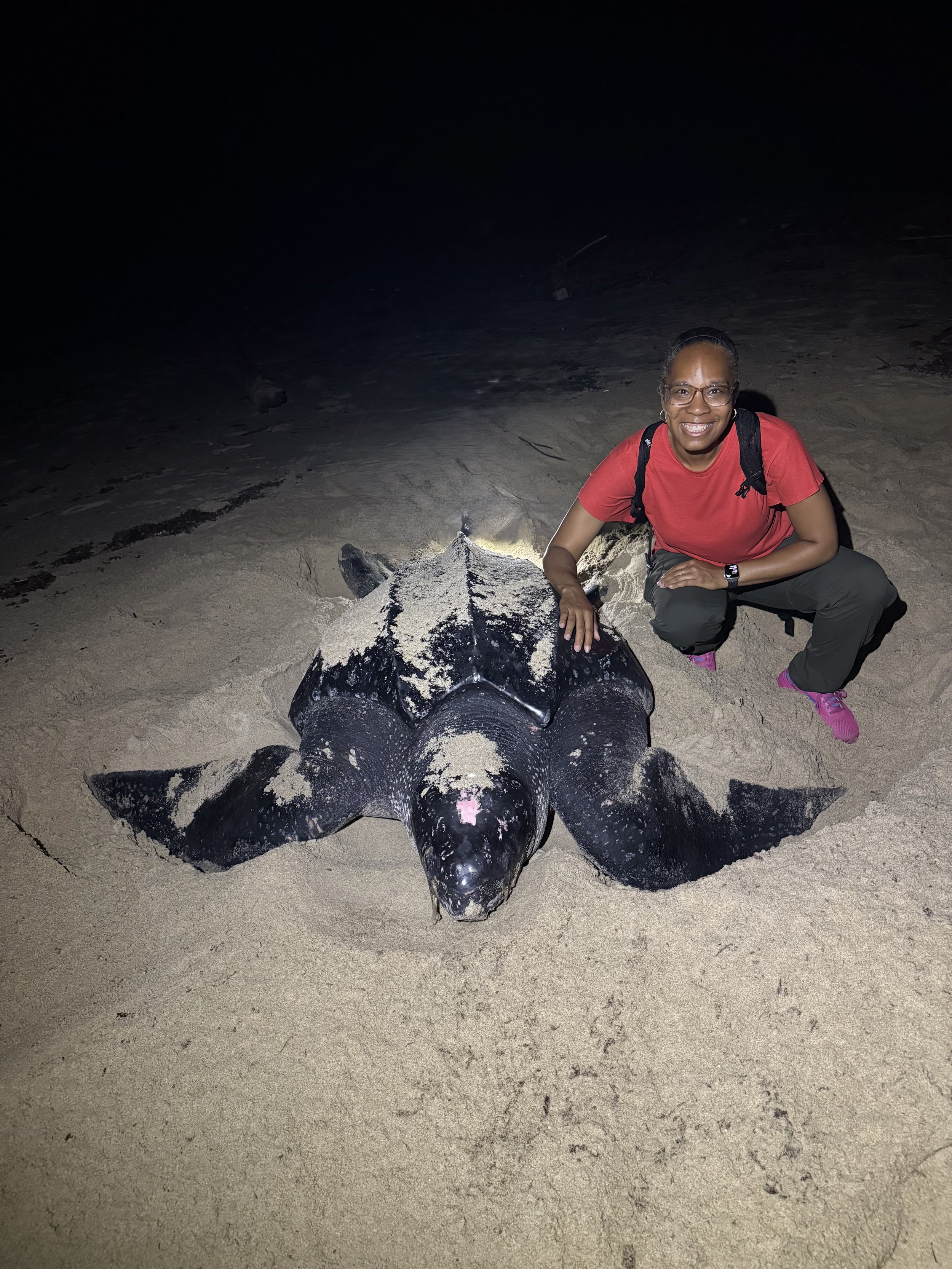A Night with the Leatherbacks in Trinidad
Female Leatherback Sea Turtle
I traveled to Trinidad with one goal: to see the leatherback sea turtles. I’d been dreaming about witnessing these sentinel giants in person for years, and when I found out that Trinidad’s nesting season runs from March to August, I didn’t hesitate—I booked the trip.
I arrived in late June, which, to be honest, isn’t the ideal time. If you’re planning a visit specifically to see the turtles, April and May are peak nesting months. Still, I crossed my fingers and hoped for the best.
The day after I landed, I headed out on a private tour arranged by Island Experiences. My guide and driver, Kahlil, picked me up at 5:30 PM, and we made our way to the east coast of the island. Our destination: Matura Beach.
The drive took about an hour and a half, winding through countryside, small towns, and villages as the sun slipped behind the hills. Somewhere along the way, we stopped for snacks—fuel for the night ahead. Kahlil, who was both friendly and incredibly knowledgeable, explained what to expect and warned that some of the roads might be a little rough.
Nature Seekers Pavilion
We arrived at the Nature Seekers facility just as the night shift staff was settling in. While the team got ready to patrol the beach for turtle activity, I waited at the pavilion with Kahlil and two staff members. It took a couple of hours, but then came the call over the radio: a leatherback had emerged from the ocean. She was a bit of a walk away, though—maybe 15 minutes through a wooded area and across the sand.
I was ready.
We hiked through the darkness using only red light to guide our steps. And then, there she was—massive, glistening, and ancient-looking. A leatherback sea turtle in all her glory. Her trail in the sand was the first sign, but seeing her up close was something else entirely.
My guides on the beach, Kenisha and Thiara, were phenomenal. Their passion for their work was palpable. As the turtle began her nesting process, they explained every step: why we use red light until she begins laying (she enters a trance-like state and becomes less sensitive to disturbance), why her eyes appeared teary (a natural salt-cleansing process), and how they collect data for conservation.
Sea Turtle laying eggs
Here’s what I learned about nesting:
The female uses her powerful back flippers to dig a deep, flask-shaped hole in the sand. Once the nest is ready, she lays her eggs—some viable, some not. The non-viable eggs act as a cushion, protecting the others as she deposits as many as 100 eggs into the chamber. It’s an incredibly labor-intensive process that can take over an hour. Once she’s finished, she carefully covers the nest with sand, disguising it from predators.
Once the team completed their tagging and data collection, we stepped back and let her make her way to the water. I watched as she slowly moved toward the surf, pausing between waves until the ocean finally swept over her.
I thought that was the end of the night, but then came a surprise: I got to hold a leatherback hatchling.
Yes, you read that right.
I was already riding a high from seeing the nesting female, but this sent me over the moon. The baby turtle was tiny—small enough to fit in my palm. It was wild to hold something so small that would one day grow to be five or six feet long. I carried it gently to the shoreline in a small bucket lined with beach sand. It’s important that hatchlings crawl on the beach before entering the ocean, as that’s how they imprint on the location.
The little one got a bit turned around at first, but with some patient red-light guiding, it found its way to the water. The waves came in and—just like that—it was gone.
I couldn’t stop smiling.
Overall experience: 10 out of 10. Would do again!
About Nature Seekers & How You Can Help
This incredible experience wouldn’t have been possible without the work of Nature Seekers, a local conservation group based in Matura, Trinidad. Since 1990, they’ve been protecting endangered leatherback sea turtles and educating the public about the importance of preserving these ancient creatures.
Their team—made up of passionate guides, researchers, and community members—monitors nesting sites, tags and tracks turtles, and protects eggs from poachers and predators. They also engage in reforestation, environmental education, and beach clean-ups. It’s a true community-driven conservation effort, and they’ve helped turn Matura into one of the safest nesting beaches for leatherbacks in the world.
Want to support their mission? Here’s how you can help:
• 🐢 Donate directly via their website: natureseekers.org
• 🧑🏽🤝🧑🏽 Volunteer with their turtle conservation or reforestation programs
• 📢 Spread the word by sharing their work or planning a visit of your own
Whether you’re traveling to Trinidad or just want to make a difference from afar, every bit of support helps keep these sentinel giants coming back year after year. Visit their website at natureseekers.org

